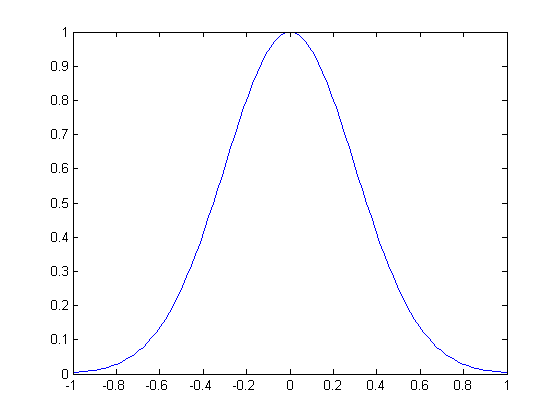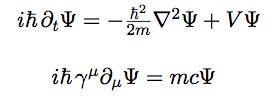The human brain is perhaps the most complex machine that we have investigated, especially the higher cognitive functions. Psychologists have been working for decades to untangle the complex set of genetic, neurological, environmental, and situational factors that ultimately result in human behavior, with a great deal of success.
There are a few standouts – seminal experiments that not only demonstrate something interesting about human nature, but also create an entire paradigm of psychological studies that other researcher replicate with various modifications. One such such is the marshmallow test, first conducted by a team lead by Walter Mischel then at Stanford University.
The first series of such studies Mischel published in 1972 took a group of preschoolers and offered them their choice of three rewards: a cookie, a pretzel, or a marshmallow. The researcher then told the children that they could eat their treat whenever they want, but if they hold off the researcher would return with an additional treat. The study was a test of self-control and the ability to delay gratification.
Mischel was initially interested in the various cognitive styles the children would use to delay gratification, and which were more successful. He found that the children who were able to distract themselves by thinking of something else or engaging in an activity were able to delay gratification longer. Further, when the treat was removed from view children were able to delay gratification longer, but thinking about the reward shortened this delay.
What we can conclude from this study is that some children had better strategies and were better able to control their immediate impulses for a longer term reward. The study did not demonstrate whether these skills were learned or were innate.
If this were the end of the marshmallow test it probably would not have become as famous within the psychological community. What we particularly stunning about this series of studies is that Mischel followed the children in his initial studies to see how their lives turned out. In a 1989 follow up study he found:
Those 4-year-old children who delayed gratification longer in certain laboratory situations developed into more cognitively and socially competent adolescents, achieving higher scholastic performance and coping better with frustration and stress. Experiments in the same research program also identified specific cognitive and attentional processes that allow effective self-regulation early in the course of development. The experimental results, in turn, specified the particular types of preschool delay situations diagnostic for predicting aspects of cognitive and social competence later in life.
Children who were able to delay eating the marshmallow for a few minutes longer than their peers were more successful in school and then later in their careers, in their marriages, and generally in life. It is the fact that the marshmallow test had such profound real world implications, in my opinion, that makes them so powerful and famous.
Other researchers have run with this ball. One study, for example, shows that performance on the marshmallow test predicts body mass index 30 years later.
Another series of studies found that older children are better able to delay gratification than younger children (no surprise), that the larger the reward the greater the ability to delay gratification, and there does not appear to be any upper limit to this effect (so really large rewards will result in great ability to delay gratification). In other words, even young children go through a mental calculation of expense and reward and are able to delay gratification if the reward is big enough.
Psychologists now consider the ability for self control and delayed gratification to be part of what is called executive function, a frontal lobe function that is the behavior master control center, making strategic long term decisions and then imposing control over behavior to maintain and achieve goals. Attention deficit and hyperactivity disorder (ADHD) is now understood as a deficit in executive function. It is therefore not surprising that children with ADHD perform worse on the marshmallow test.
In fact the outcomes that Mischel found mirror those found in people with ADHD – worse academic, career, marriage, and general life outcome.
A recent study published in January of 2013 was touted by the press as putting the now classic marshmallow test in a different light. I think they oversold the implications, but the study does add a new layer, showing how complex it can be to interpret psychological studies, even those that seem straightforward.
Researchers repeated the marshmallow test but additionally primed subjects to either trust or distrust the researchers. They told them they could do some art work, and gave them crappy art tools to work with but promised they would return soon with better crayons and supplies. In one group the researcher returned, and in the other they did not. When they were later subjected to the marshmallow test those who did not receive the better art supplies had shorter delay of gratification times than those who did.
I do not think this calls for a reinterpretation of the marshmallow test, but it does indicate that trust is a prerequisite to this study paradigm. In other words, the subjects will only make the effort to delay gratification if they trust that the future reward will actually manifest. If they have a good reason to distrust the researcher then it is actually rational not to delay – to take the marshmallow in the hand rather than two from the researcher.
The researchers conclude that performance on the marshmallow test may not only reflect inherent executive function, but also the child’s environment, whether or not they have learned to trust the adults in their life.
The problem with this interpretation, however, is that it is difficult to extrapolate from the laboratory condition to life. Mischel did the follow up to show that the results of his test did play out in the real world. In this new study the children may have been responding to the immediate experience not to trust their current situation. It is reasonable to extrapolate that this may also apply to their environment in general, but this is just a hypothesis at this point.
The researchers will have to do some follow up studies where they relate subjects’ real-world environment to their performance on the test. The trick here is that their environment may be partly genetically determined also (perhaps they have a chaotic environment because their genetic parents also lack self control), and therefore this factor would need to be controlled for also. Twin studies can be helpful, as can studies of adopted children.
There are likely to be other environmental factors that influence performance on the marshmallow test. For example, other studies have shown that exerting self-control in one area decreases self-control in others, as if people are expending a finite reservoir of self-control.
In the end it is likely, as with many behaviors, performance on the marshmallow test is a combination of innate personality and learned behavior from the environment. That there are both environmental and innate factors is almost axiomatic. The real question is – what is the balance between the two in this particular case. Is delayed gratification mostly learned, mostly innate, or roughly equal between the two? That is an interesting area of probable future research.


![Stana Cerovic, Montenegro’s last sworn virgin [1200x800] Stana Cerovic, Montenegro’s last sworn virgin [1200x800]](http://b.thumbs.redditmedia.com/c3asQ6zOeHG1OgQ7.jpg)